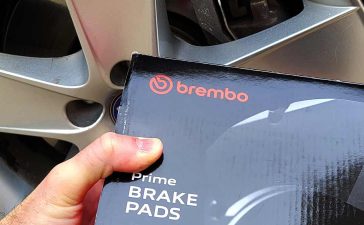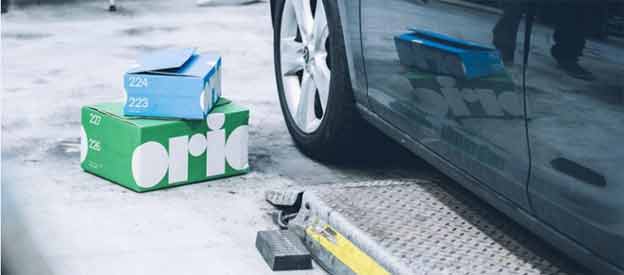Frost can form on the surface of a windscreen when the temperature outside is below freezing and there is moisture present in the air. When the moisture condenses on the surface of the windscreen, it can turn into frost. To remove frost from your windscreen wipers, you can use a scraper or a de-icing solution. It is important to be careful when using a scraper, as the windscreen can be easily scratched.
You can also turn on the heater and defroster in your car to help melt the frost. This will help to warm up the windscreen and remove the frost more quickly. Alternatively, you can start the car and turn on the windscreen wipers, as the movement of the wipers can help to break up and remove the frost. But there are better and more appropriate solutions.
Table of Contents
Windshield Wiper Blades
Good and functional windshield wipers are extremely important for obvious reasons. Not to mention the possible consequences of not seeing a pedestrian in time, a stopped vehicle, and the like. Tiredness also sets in incomparably faster when your eyes are constantly straining to see through a windshield that simply cannot be wiped properly due to worn or damaged wipers.
Winter conditions can destroy windshield wipers pretty quickly, especially if you don’t use them the way they’re supposed to. A little preparation, effort and patience can drastically extend their lifespan.

Prevent them from being damaged by frost, ice, and snow
There are a few steps you can take to preserve your windscreen wipers and help prevent them from being damaged by frost, ice, and snow:
- Remove snow and ice from the wipers before using them. This will help prevent the wipers from getting stuck or damaged when they are in use.
- Avoid using the wipers to remove heavy snow and ice from the windscreen. Instead, use a snow brush or scraper to remove the snow and ice, and then use the wipers to clear away any remaining moisture.
- When the wipers are not in use, lift them off the windscreen to prevent ice and frost from forming on them.
- If you know that a period of cold weather is coming, consider applying a silicone-based protectant to the wipers to help prevent them from freezing to the windscreen.
- If the wipers do become frozen to the windscreen, do not try to force them off. Instead, use a safe method to melt the ice, such as a hair dryer or a warm, damp cloth.
By following these steps, you can help preserve your windscreen wipers and keep them in good working order, even in cold weather conditions.

Do-it-yourself glass deicer
Ordinary medical alcohol melts ice. The most accessible option for everyone is alcohol, which we use for disinfection. In the pharmacy, we usually buy it in a concentration of 70% or 75%. It can also be found in a concentration of 96%.
By the way, alcohol is an important ingredient in windshield washer fluid, among other things, precisely because it is resistant to low temperatures.
There is no precisely defined “formula” that we should use, that is, the mixture that is most effective, since it depends on the concentration of the alcohol we use, the temperature of the mixture of water and alcohol itself, the outside temperature, etc. We recommend that you read our article on making this mixture for windshield defrosting.
Alcohol of 70% will definitely be helpful, although mixing with water is recommended to save money. Try a mixture of 70% alcohol and tap water in a ratio of 2:1 – it should be effective enough for thicker ice at lower temperatures, although in some cases you need to spray a little more.
Some advise adding a little detergent from the dishes, but we have not been able to reliably determine whether it really helps.
De-icer from the store
If you don’t just want to “experiment”, you can also use winter windshield washer fluid, which you can buy at any gas station. Just pour the liquid you buy into a suitable container, preferably a sprayer – if you don’t have a sprayer, you can take any bottle, pierce the cap and spray through that hole. As a last resort, you can also pour directly from the bottle. The speed and efficiency of defrosting with washing liquid depends on the type of liquid, temperature, ice thickness…
Here are a few more tips on how to keep your windshield and windshield wipers free of ice during icy winter nights:
- Put some material under the windscreen wipers – cloth, cardboard, newspaper, catalogs and the like, anything to prevent the wipers from sticking to the windshield. True, this solution can also have its drawbacks depending on the weather conditions and the material you use, but it is still better than directly gluing the wipers and glass.
- You can put cardboard or a blanket over the entire windshield and fix it with wipers (thereby simultaneously separating the wipers from the windshield and preventing blinding), but you can also tie a very thin string, practically a thread, to the ends, which you insert into the cabin and close the door. Of course, we cannot guarantee anything regarding possible damage to rubber around the door – it depends on the thickness of the string you use, weather conditions, etc.
- Supposedly, spray for de-icing windows can also help preventively – if it is sprayed under and around the wipers in the evening, as well as on the wipers themselves.
- Before leaving the car, regardless of whether it is an open or closed parking lot, clean the snow and ice around the wipers.
- Raise the wipers – this is an old trick, although in case of strong wind there is a risk of damage. In some newer cars, the wipers cannot be raised at all because they are “hidden” under the hood.











